Effective Strategies To Market A Restaurant – Digital Marketing Ideas And Trends For Restaurant Operators
As we step into 2025, the restaurant industry finds itself at the forefront of innovation, driven by rapidly evolving consumer preferences and technological advancements, including AI, automation and visually engaging content of social media platforms. In today’s hyper-connected and competitive dining landscape, standing out is more crucial than ever.
With an abundance of culinary options at their fingertips, diners are seeking experiences that go beyond mere sustenance. Restaurant owners and marketers are now tasked with crafting strategies that not only attract new customers but also foster unwavering loyalty among existing patrons. The digital realm, coupled with emerging trends, offers unprecedented opportunities for restaurants to enhance their visibility, engagement, and overall appeal. From immersive technologies to hyper-personalized experiences, the marketing trends of 2025 are reshaping how restaurants connect with their audience, promising a future where dining out is as much about the experience as it is about the food itself.
This comprehensive guide presents the best restaurant marketing ideas and digital strategies designed to drive online success. These tactics will empower you to elevate your restaurant’s brand and connect with your target audience.
Whether you’re launching a new venue or looking to revitalize an existing establishment, these innovative approaches will help you navigate the ever-evolving market and achieve your business goals. Dive in to discover how to transform your marketing efforts and ensure your restaurant thrives in the digital age.
Here are 20 top digital marketing ideas, including foundational basics and advanced outreach strategies, to elevate your restaurant to the next level:
Restaurant Marketing Ideas
Integrate these digital strategies into your restaurant’s marketing plan. We are confident these proven ideas will enhance your visibility and increase customer engagement.
Table of contents:
Digital Foundation Basics:
- NAP Optimization
- Professional Food Photography
- Local SEO
- Functional Website Design
- Online Ordering
- Restaurant Branding
- Online Reputation
- Activate Multi-Channel
- Offers & Promotions
- Pay-Per-Click Advertising
Advanced Outreach Strategies:
Digital Foundation Basics (1-10)
The following digital strategies are fundamental and should be prioritized for implementation:
1. NAP Optimization
NAP stands for Name, Address, and Phone Number. It’s a crucial component of local SEO.
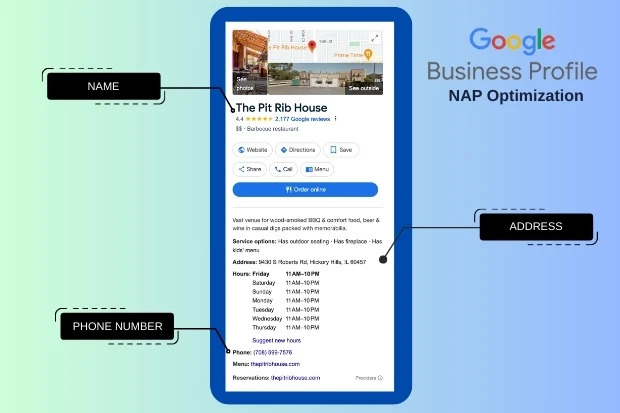
Google NAP Optimization
Optimizing your NAP can be a game-changer for local SEO. Implementing various restaurant marketing strategies can boost your visibility and attract new customers. While paid advertising is beneficial, ranking well in local organic search results is essential.
Consider this scenario: a customer visits your website but cannot find your location or contact details.
To avoid this, place important information, like your business name and phone number, at the top of your website. Including this information helps improve your chances of appearing in geo-targeted searches on Google.
For example, if a customer searches for “Find local restaurants near me” on Google, will your website appear in the results? By ensuring your NAP is consistent across all platforms and on your website, you increase the likelihood of appearing in Google searches.
Since NAP directly impacts your SEO ranking, we recommend making sure it is consistent and accurate across the web.
PRO TIP
Claim and verify the Google business profile ASAP.
Claiming and verifying your Google Business Profile ensures your restaurant appears in local searches and on Google Maps, making it easier for potential customers to find you. You can then control and update your restaurant’s name, address, phone number, hours of operation, and other critical information, ensuring customers always have the most current details. DO NOT allow anyone, including 3rd party online ordering companies to “own” your business profile.
Your Google business profile allows customers to leave reviews, ask questions, and interact directly with your business. Responding to reviews and queries can help build a positive reputation and engage with your audience.
A verified Google Business Profile adds a layer of trust and credibility to your restaurant. Customers are more likely to visit a restaurant that appears legitimate and well-managed online.
Action Steps: To Do
- Review your restaurant’s local listings » Scan Now
- Explore ways to optimize your Google Business profile » Learn More
- Ensure your restaurant is easily found online by implementing the essential NAP Optimization steps » Download our Free NAP Optimization Checklist Now!
2. Professional Food Photography
Food photography is one example of how Instagram has affected user expectations. It’s simple to see a pattern if you look at some of the most popular food photographs on Instagram.
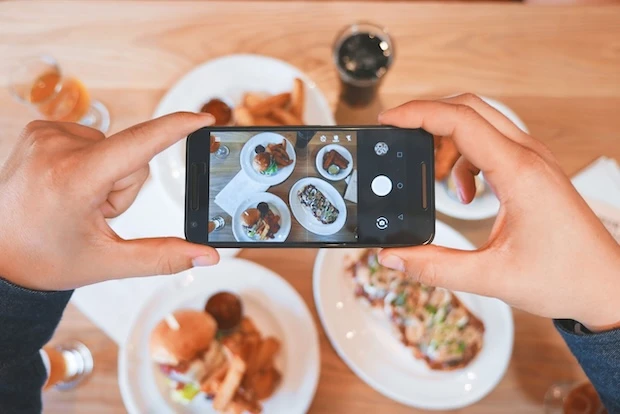
Invest in high-quality, visually appealing images of your signature dishes. Professional food photography can significantly impact your restaurant’s appeal on social media, your website, and online review platforms.
Consider these tips:
- Hire a professional food photographer
- Use natural lighting when possible
- Style dishes creatively but authentically
- Showcase a variety of menu items
- Update photos seasonally to reflect menu changes
PRO TIP
Schedule professional digital shoot for fresh content.
Digital assets from a professional photoshoot, such as images, short clips, and long-form videos, can be repurposed across various marketing materials. These include your menu, flyers, website, social media, multi-channel digital marketing campaigns, and PPC ad campaigns.
Do you want to wow your customers with mouth-watering photos. Learn more about food marketing for restaurants »
3. Local SEO
According to MOZ, 90% of purchases take place in a physical store, and a staggering of 80% of US disposable income is being spent within 20 miles of home.
Major restaurant brands often focus their marketing on national or global levels, neglecting local details and leaving a gap in the market—an untapped opportunity for local businesses.
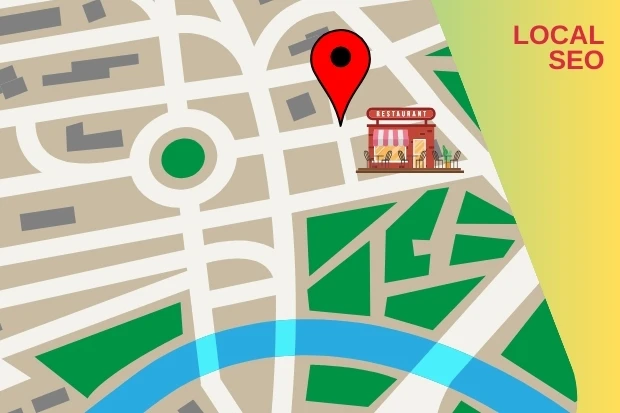
Local SEO remains a crucial marketing strategy for restaurants.
Here are some suggested tactics and considerations:
- Google Business Profile optimization: Ensure your Google Business Profile is fully optimized with accurate information, high-quality photos, and regular posts. This is critical for appearing in local search results and the Map Pack.
- Local keywords: Incorporate location-specific keywords naturally throughout your website content, including city names, neighborhoods, and local landmarks.
- Online reviews: Actively encourage and manage customer reviews across platforms like Google, Yelp, and TripAdvisor. Respond promptly to both positive and negative reviews.
- Local link building: Develop partnerships with local businesses, sponsors, and community organizations to earn high-quality local backlinks.
- Schema markup: Implement local business schema markup on your website to help search engines understand and display your restaurant information more effectively.
- Mobile optimization: Ensure your website is fully responsive and optimized for mobile devices, as many local searches occur on smartphones.
- Local content creation: Develop blog posts, videos, or social media content that highlights local events, ingredients, or community involvement.
- Localized social media: Use location-based hashtags and engage with local influencers or food bloggers on social media platforms.
- Voice search optimization: Optimize for voice search queries by including natural language phrases and questions in your content.
- Citation consistency: Maintain consistent NAP (Name, Address, Phone number) information across all online directories and platforms.
By implementing these updated local SEO strategies, restaurants can improve their visibility in local search results, attract more nearby customers, and stand out in their community.
Learn more about how to do local SEO for multi-location restaurants »
Action Steps: To Do
- Review your restaurant’s local SEO » Scan Now
- Understand how to apply local SEO for multi-location brands » Learn More
- Ensure your restaurant is easily found locally by implementing the essential Local SEO steps » Download our Free Local SEO Checklist Now!
4. Functional Website Design
A functional website design is crucial for restaurant success in the digital age.
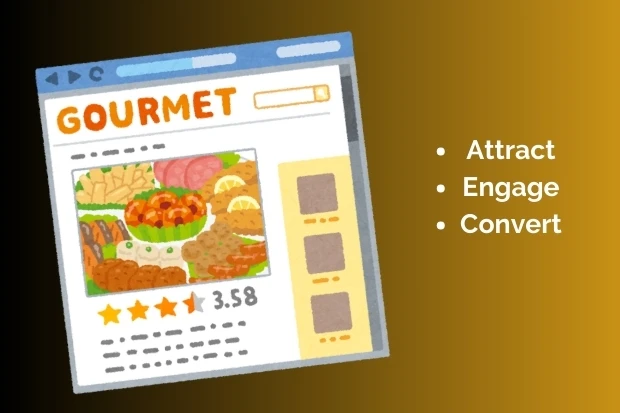
Here are some key elements to focus on for an effective, conversion-driven restaurant website:
- Mobile responsiveness: Ensure your website is fully optimized for mobile devices, as many customers will search and browse on smartphones.
- Fast loading speed: Optimize images and code to ensure quick page load times, which improves user experience and SEO rankings.
- Clear, concise messaging: Your website should tell your restaurant’s story and convey your brand message in a simple, easy-to-understand manner.
- Accessibility: Make your website ADA compliant to accommodate users with disabilities affecting hearing, vision, or physical capabilities.
- High-quality visuals: Include vibrant, professional images of your food, ambiance, and staff. Consider linking these from your social media accounts for consistency.
- Interactive elements: Incorporate features like an online menu builder or virtual tour to engage visitors.
- Prominent menu display: Ensure your menu is easy to find, read, and navigate on all devices.
- Essential information: Display vital details like contact information, location, hours, and reservation options prominently.
- Online ordering integration: If applicable, seamlessly integrate online ordering functionality into your website design.
- Customer reviews: Showcase positive customer testimonials to build trust and credibility.
- Call-to-action buttons: Include clear CTAs for reservations, ordering, or signing up for promotions.
- Social media integration: Add social media buttons to encourage visitors to follow and engage with your restaurant on various platforms.
By implementing these updated elements, your restaurant website can effectively attract and convert visitors into customers, enhancing your overall digital marketing strategy.
PRO TIP
The restaurant website must meet Core Web Vitals standards.
Ensuring your restaurant website meets the Core Web Vitals metrics is essential for providing a seamless and enjoyable experience for your visitors. A well-optimized site can lead to higher engagement and greater customer satisfaction.
Moreover, since Google uses Core Web Vitals as a ranking factor, optimizing your website can significantly boost your search engine visibility, making it easier for potential customers to find your restaurant online.
To check your restaurant website’s Core Web Vitals and other performance metrics, visit Google PageSpeed Insights. Simply enter your website URL and click “Analyze” to see how your site performs.
If your website didn’t pass the Core Web Vitals assessment, it’s important to take immediate action. Addressing these issues is key to improving both user experience and your search engine rankings.

Our team of experts is ready to assist you. Schedule a consultation with us to explore actionable strategies for enhancing your website’s performance. We’ll help you optimize loading speed, interactivity, and visual stability, ensuring your restaurant’s online presence is top-notch for both customers and search engines. Don’t let poor web performance hold your restaurant back—contact us today!
Action Steps: To Do
- Check your website’s PageSpeed Insights » Test Now
- Understand what makes good restaurant website design » Learn More
- Make sure your restaurant’s website stands out with top-notch design. Follow these steps » Download our Free Website Design Checklist Now!
5. Online Ordering
Online ordering and delivery is mainstream, and to stay competitive and relevant, it’s essential to offer your customers multiple ways to order their meals. The convenience of online ordering and food delivery has become essential for both younger and older generations.
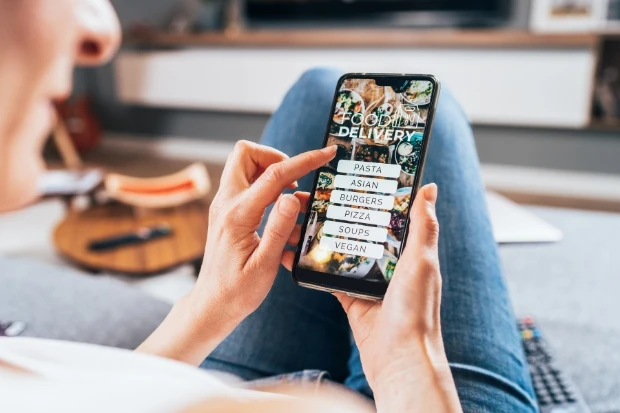
To stay competitive and meet customer expectations, restaurants must offer seamless online ordering options through their website and mobile apps.
Here are key strategies for effective online ordering and delivery:
- User-Friendly Interface: Ensure your online ordering platform is intuitive and easy to navigate. This includes a clear menu layout, simple ordering process, and secure payment options.
- Mobile Optimization: With a significant number of orders coming from mobile devices, optimize your website and app for mobile use. Fast loading times and responsive design are crucial.
- Integration with Delivery Services: Partner with popular delivery services like Uber Eats, DoorDash, and Postmates to expand your reach. Ensure these integrations are smooth and that your menu is accurately represented on these platforms.
- Real-Time Order Tracking: Provide customers with real-time updates on their order status. This feature enhances the customer experience by keeping them informed from order placement to delivery.
- Promotions and Discounts: Offer exclusive deals and discounts for online orders. This can include first-time order discounts, loyalty rewards, and seasonal promotions to encourage repeat business.
- Feedback and Improvement: Collect customer feedback on their delivery experience and use it to make continuous improvements. Address any issues promptly to maintain high customer satisfaction.
- Marketing and Engagement: Use push notifications and email marketing to inform customers of new menu items, special offers, and updates. Personalized messages can significantly boost engagement and sales.
- Sustainability Practices: Consider eco-friendly packaging options to appeal to environmentally conscious customers. Highlight your sustainability efforts in your marketing materials.
By implementing these strategies, your restaurant can enhance its online delivery service, boost revenue, and foster customer loyalty.
6. Restaurant Branding
Restaurant branding remains a crucial marketing strategy, but it has evolved to encompass more elements in today’s digital landscape.
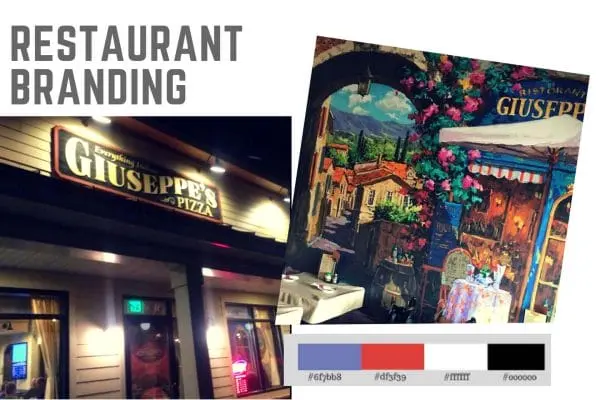
Here’s a practical approach to restaurant branding:
- Develop a unique brand identity: Create a distinctive logo, color scheme, and visual style that reflects your restaurant’s personality and cuisine. Ensure this identity is consistently applied across all platforms – from your physical space to your website and social media profiles.
- Craft a compelling brand story: Share the inspiration behind your restaurant, its history, and your culinary philosophy. This narrative should resonate with your target audience and differentiate you from competitors.
- Define your brand voice: Establish a consistent tone and style for all communications, whether it’s casual and friendly or sophisticated and formal. This voice should align with your brand identity and appeal to your ideal customers.
- Embrace digital branding: Ensure your brand is effectively represented across all digital touchpoints, including your website, social media profiles, online review sites, and food delivery apps.
- Create branded content: Develop high-quality, shareable content that showcases your brand values, such as behind-the-scenes videos, chef interviews, or recipe tutorials.
- Focus on experiential branding: Design your physical space and customer interactions to deliver a cohesive brand experience. This includes everything from interior design to staff uniforms and menu presentation.
- Incorporate sustainability and social responsibility: Modern consumers value brands that demonstrate environmental consciousness and community involvement. Highlight your sustainable practices or charitable initiatives as part of your brand identity.
- Leverage user-generated content: Encourage customers to share their experiences with your brand on social media. Repost and engage with this content to build community and authenticity around your brand.
- Adapt to changing trends: Stay flexible and be prepared to evolve your branding strategy in response to shifting consumer preferences and market trends, while maintaining your core brand values.
- Measure brand performance: Regularly assess the effectiveness of your branding efforts using metrics such as brand awareness, customer loyalty, and social media engagement. Use these insights to refine your strategy over time.
By implementing these branding strategies, restaurants can create a strong, memorable brand that resonates with modern consumers and sets them apart in a competitive market.
PRO TIP
Create a branding guideline document for your restaurant.
Creating a branding guideline document for your restaurant ensures consistency across all platforms, reinforces your brand identity, and streamlines decision-making.
It provides clear guidelines for marketing campaigns, ensuring they align with your brand’s visual and verbal identity. This helps create a cohesive customer experience, supports clear communication, and is vital for maintaining your brand’s strength as your restaurant grows.
Action Steps: To Do
- Understand how to build a strong restaurant brand » Learn More
- Elevate Your Brand Identity! Download our Free Restaurant Branding Checklist Now
7. Online Reputation
Your online reputation directly influences how customers perceive your restaurant when they find you online. Online reviews are just as influential as personal recommendations.
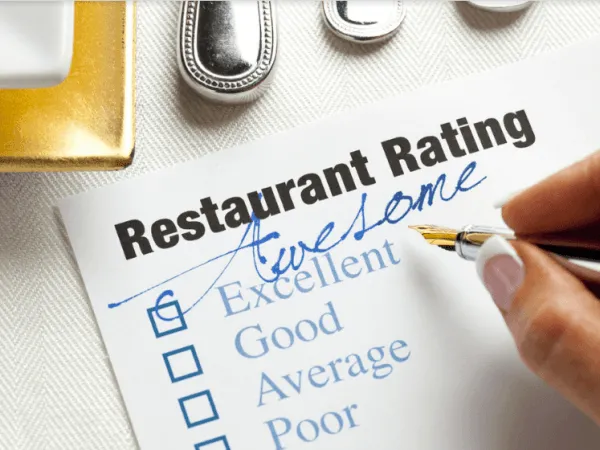
Online reputation management remains critical for restaurants, but with some evolving focus areas:
- Proactive review generation: Actively encourage satisfied customers to leave reviews across platforms like Google, Yelp, and TripAdvisor. Implement a systematic approach, such as follow-up emails or QR codes on receipts, to make leaving reviews easy.
- Review response strategy: Develop a consistent, timely approach to responding to both positive and negative reviews. Address concerns professionally and showcase your commitment to customer satisfaction.
- Social listening: Monitor social media mentions, tags, and location check-ins to gain real-time insights into customer experiences. Engage with user-generated content to build community and address issues promptly.
- Reputation analytics: Utilize reputation management software to track review trends, sentiment analysis, and competitor benchmarking. Use these insights to identify areas for improvement in your operations.
- Crisis management planning: Develop a crisis communication plan to address potential reputation threats quickly and effectively. This includes guidelines for social media responses and press communications if needed.
- Employee advocacy: Train staff on the importance of online reputation and encourage them to be brand ambassadors, both in-person and online. Their interactions can significantly impact customer perceptions.
- Visual reputation management: With the rise of visual platforms like Instagram and TikTok, pay attention to how your restaurant is visually represented online. Encourage and engage with appealing user-generated content.
- Local SEO integration: Ensure your online reputation efforts align with local SEO strategies, as positive reviews and high ratings can boost your local search visibility.
By focusing on these aspects of online reputation, restaurants can better manage their digital presence and attract more customers in today’s highly connected dining landscape.
PRO TIP
Use AI for review responses to eliminate emotional bias.
Using AI to craft review responses helps eliminate emotional bias, ensuring professional and consistent replies to customer feedback.
NGAZE AI can analyze the sentiment and content of reviews to generate appropriate and neutral responses, addressing customer concerns effectively without personal emotions influencing the tone.
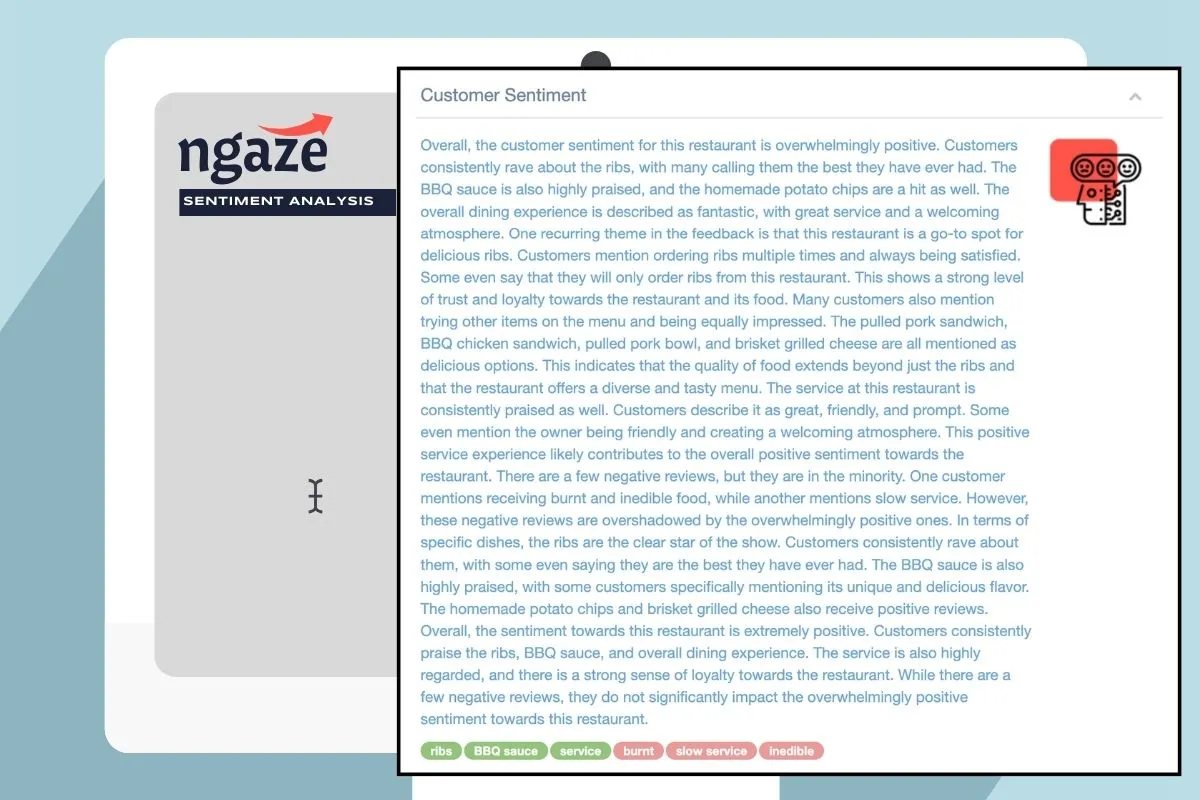
This approach not only maintains a positive brand image but also saves time, providing a systematic method for managing online reputation.
Action Steps: To Do
- Understand the basics of reputation management » Learn More
- How to handle negetive reviews » Learn More
- Protect and Enhance Your Restaurant’s Image » Download our Free Online Reputation Management Checklist Now!
8. Activate Multi-channel
Multi-channel campaigns are 37% more effective than single-channel efforts, with response rates of 14% compared to 10.2%. This significant increase in effectiveness demonstrates the importance of diversifying marketing efforts.
Restaurants must adapt their marketing strategies to reach customers across multiple platforms.

Key Channels for Restaurant Marketing: Restaurants should leverage a mix of the following marketing channels:
- Restaurant Website
- Social media platforms (Facebook, Instagram, Tiktok, Twitter)
- Review sites (Yelp, TripAdvisor)
- Mobile app
- Push messaging
- SMS
- Google Posts
- Online ordering portals
- Traditional media (print, radio, TV)
Creating a Unified Customer Experience: Consistency is crucial when implementing a multi-channel strategy. Restaurants should:
- Maintain consistent branding and messaging across all platforms
- Ensure a seamless transition between channels for customers
- Provide uniform quality of service and information regardless of the channel
Tailoring Content for Each Channel: While maintaining consistency, content should be optimized for each platform:
- Instagram: High-quality food images and behind-the-scenes content
- Facebook: Videos, events, and community engagement
- Twitter: Quick updates, promotions, and customer service
- SMS: Short, timely messages about special offers
- Email: Detailed newsletters, loyalty programs, and exclusive content
Implementing a Multi-Channel Strategy: To effectively manage a multi-channel campaign:
- Enable all available marketing channels
- Develop a cohesive strategy that aligns with your brand
- Create channel-specific content while maintaining overall consistency
- Utilize marketing automation tools to streamline efforts
- Regularly analyze performance and adjust strategies accordingly
Multi-channel marketing campaigns offer restaurants a powerful way to increase visibility, engage customers, and drive business growth.
By creating a unified experience across various platforms and tailoring content to each channel’s strengths, restaurants can effectively reach their target audience and stand out in a competitive market.
PRO TIP
Claim your restaurant profile on major online platforms.
9. Offers & Promotions
Offers and promotions are powerful tools to attract new customers and retain loyal ones. While traditional discounts and deals remain effective, updating your approach to offers and promotions can yield even better results.

Here are some modern strategies to consider:
- Personalized Promotions: Use customer data to tailor offers to individual preferences. For example, send birthday discounts or special deals based on past orders.
- Limited-Time Offers: Create a sense of urgency with time-sensitive promotions. Flash sales or exclusive weekend deals can drive immediate traffic and sales.
- Social Media Exclusives: Engage your audience by offering special promotions exclusively on your social media channels. This not only boosts your social media presence but also encourages followers to stay tuned for future deals.
- Referral Programs: Encourage your existing customers to bring in new ones by offering discounts or freebies for successful referrals. This can be particularly effective when combined with a loyalty rewards program.
- Collaborative Promotions: Partner with local businesses or influencers to create joint promotions. For instance, a local gym could offer a discount at your restaurant for their members, and vice versa.
- Seasonal and Holiday Specials: Capitalize on holidays and seasonal events with themed promotions. For example, offer a special menu for Valentine’s Day or a summer BBQ discount.
- Gamified Offers: Introduce elements of gamification to your promotions. Customers could spin a digital wheel for a chance to win different discounts or participate in a loyalty points challenge.
By incorporating these strategies, you can create more dynamic and engaging offers that not only attract new customers but also keep your existing clientele excited and coming back for more.
10. Pay-Per-Click Advertising
Pay-Per-Click (PPC) advertising remains a powerful tool for driving targeted traffic to your restaurant’s website. However, to maximize the effectiveness of your PPC campaigns, it’s essential to adopt advanced strategies and stay updated with the latest trends.
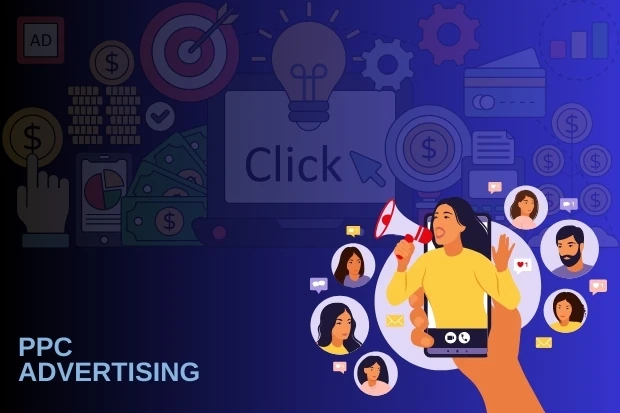
Here are some tactics to enhance your PPC efforts:
- Utilize AI and Machine Learning: Leverage AI-driven tools to optimize your PPC campaigns. These tools can help with bid management, audience targeting, and ad copy optimization, ensuring your ads reach the right audience at the right time.
- Hyper-Local Targeting: Focus on hyper-local keywords and geo-targeting to attract nearby customers. Use location extensions and local inventory ads to highlight your proximity and drive foot traffic.
- Dynamic Search Ads: Implement dynamic search ads (DSAs) to automatically generate relevant ads based on your website content. This ensures that your ads are always up-to-date and aligned with your menu and promotions.
- Remarketing Campaigns: Set up remarketing campaigns to re-engage visitors who have previously interacted with your website. Customize your ads to offer special promotions or remind them of their previous interest in your restaurant.
- Ad Extensions: Use various ad extensions such as sitelink, callout, and structured snippet extensions to provide additional information and increase your ad’s visibility and click-through rates.
- Video Ads: Incorporate video ads on platforms like YouTube and social media to showcase your restaurant’s ambiance, special dishes, and customer testimonials. Video content is highly engaging and can significantly boost your campaign’s performance.
- Seasonal and Event-Based Campaigns: Tailor your PPC campaigns around seasonal events, holidays, and local happenings. Create special offers and promotions that resonate with the current time of year or local events to attract more customers.
- Performance Tracking and Analytics: Continuously monitor and analyze your PPC campaigns using tools like Google Analytics and Google Ads. Track key metrics such as click-through rates (CTR), conversion rates, and return on ad spend (ROAS) to refine your strategies and improve performance.
By implementing these advanced PPC strategies, you can enhance your online visibility, attract more customers, and drive higher revenue for your restaurant.
Advanced Outreach Strategies (11-20)
These are the marketing strategies to grow customer enagement and develop guest loyalty:
11. Menu Marketing
In the competitive landscape of the restaurant industry, your menu is more than just a list of dishes—it’s a powerful marketing tool that can significantly influence customer choices and drive sales.
As diners increasingly seek unique and memorable experiences, effective menu marketing has become essential for capturing their attention and enticing them to explore your offerings.
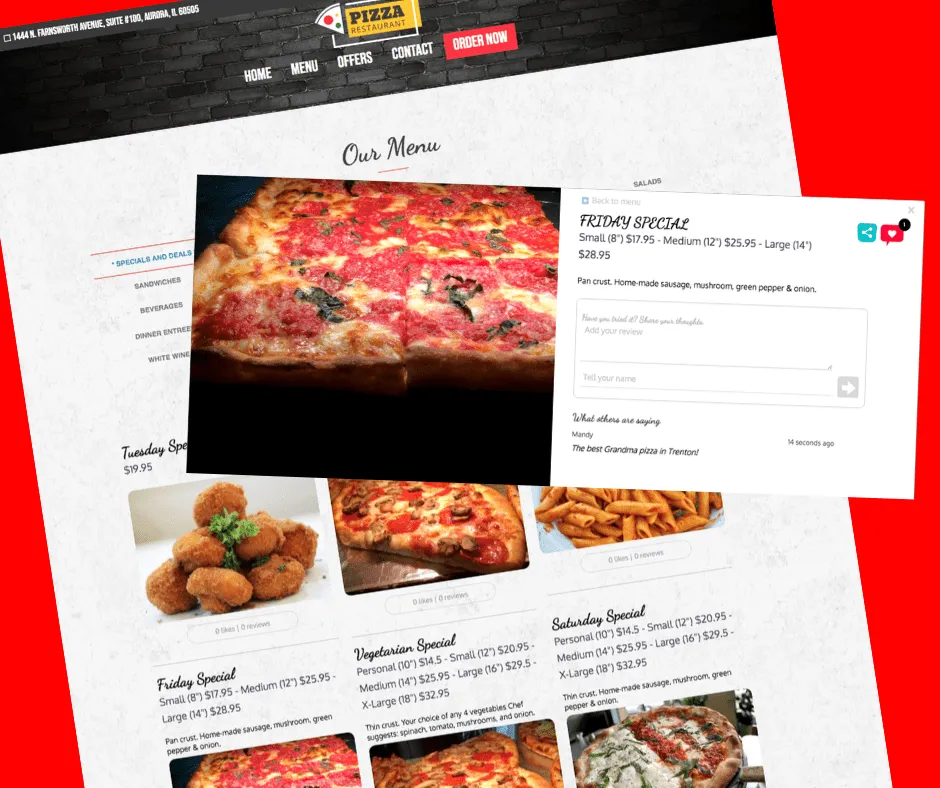
Here’s how you can elevate your menu marketing strategy to engage customers and boost your bottom line.
Digital Menu Optimization: Ensure your digital menu is not just available online, but optimized for search engines and user experience. This includes:
- Using high-quality, appetizing images for each dish
- Implementing structured data markup to help search engines understand your menu items
- Ensuring the menu is mobile-responsive and loads quickly
Interactive Menus: Incorporate interactive elements into your digital menu, such as:
- Filters for dietary restrictions (gluten-free, vegan, etc.)
- Calorie and nutritional information toggles
- Suggested wine or beverage pairings
Menu Engineering: Apply menu psychology and design principles to influence customer choices:
- Strategically place high-profit items in prime menu locations
- Use descriptive language to make dishes more appealing
- Implement a clear and logical menu structure
Seasonal and Limited-Time Offerings: Regularly update your menu to include:
- Seasonal specials that capitalize on fresh, local ingredients
- Limited-time offers to create urgency and repeat visits
Storytelling Through Menu Descriptions: Go beyond basic item descriptions:
- Share the origin of ingredients or inspiration behind dishes
- Highlight unique preparation methods or chef specialties
Accessibility: Ensure your menu is accessible to all customers:
- Offer large print and Braille versions upon request
- Provide allergen information clearly for each dish
QR Code Menus: While maintaining physical menus, offer QR code options for:
- Contactless viewing
- Easy updates without reprinting costs
- Linking to additional content like dish videos or reviews
By implementing these updated menu marketing strategies, restaurants can enhance customer engagement, increase sales of high-profit items, and provide a more personalized dining experience
According to OpenTable, 93% of people view menus online prior to dining out. Optimizing the menu is one of the most important takeaway as a restaurant marketing ideas.
PRO TIP
Upgrade to an interactive & dynamic menu on your restaurant website.
Richmenu.io is an innovative solution for restaurants looking to modernize their menu presentation and adapt to the increasing demand for contactless options in the dining industry. By leveraging this platform, restaurants can enhance their digital presence and provide a more seamless experience for their customers.
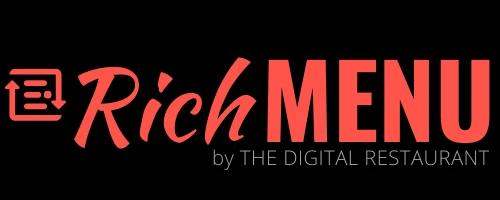
12. Social Media Engagement
Social media is not just a platform for sharing photos and updates; it’s a powerful tool for building and engaging your restaurant’s community.
With over 200 million food-related posts on Instagram alone, social media offers an unparalleled opportunity to captivate your audience and drive customer engagement. Whether it’s Instagram, Facebook, Twitter, or TikTok, leveraging these platforms effectively can significantly enhance your restaurant’s visibility and customer loyalty.

Social media engagement is critical for modern restaurant marketing. It’s not enough to simply have a presence on these platforms; active and meaningful engagement is key.
Here are some strategies to enhance your social media engagement:
- Utilize User-Generated Content (UGC): Encourage your customers to share their dining experiences by creating a unique hashtag for your restaurant. Repost their content on your official pages to build a sense of community and authenticity.
- Interactive Content: Use polls, and live videos to interact with your followers in real-time. This not only boosts engagement but also provides valuable insights into customer preferences and feedback.
- Influencer Collaborations: Partner with local food bloggers and influencers to reach a broader audience. Influencers can provide honest reviews and share their experiences, which can attract new customers to your restaurant.
- Storytelling: Share behind-the-scenes content, such as the preparation of a signature dish or a day in the life of your chef. This humanizes your brand and creates a deeper connection with your audience.
- Location-Based Advertising: Use geo-tagging and location-based ads to target potential customers in your vicinity. This is particularly effective for attracting local diners and increasing foot traffic.
- Contests and Giveaways: Host regular contests and giveaways to keep your audience engaged. This not only increases your followers but also encourages user interaction and brand loyalty.
- Consistent Posting Schedule: Maintain a consistent posting schedule to keep your audience engaged. Use NGAZE social media management to plan and schedule your posts in advance.
- Analytics and Adjustments: Regularly analyze your social media metrics to understand what content resonates most with your audience. Use these insights to refine your strategy and improve engagement.
By focusing on these strategies, you can create a vibrant and engaged online community that not only follows your restaurant but also actively participates in its growth and success.
Social media engagement is not a one-time effort but a continuous process that requires creativity, consistency, and genuine interaction.
PRO TIP
Craft a customized 52-week marketing playbook..
Creating and executing a comprehensive year-long marketing strategy (52-week marketing playbook) can be daunting, involving numerous components such as market research, content planning, campaign management, and performance analysis. However, innovative solutions like NGAZE AI software can significantly simplify this complex task.
NGAZE AI helps streamline workflows, optimize campaign performance, and ensure your marketing initiatives are aligned with your business goals. By using NGAZE AI, you can save time, reduce costs, and achieve more effective and efficient marketing outcomes, making the daunting task of year-long strategy execution much more manageable.
13. Email Marketing
Email marketing is a cornerstone of any restaurant’s marketing strategy due to its cost-effectiveness and ability to deliver personalized messages directly to your audience.
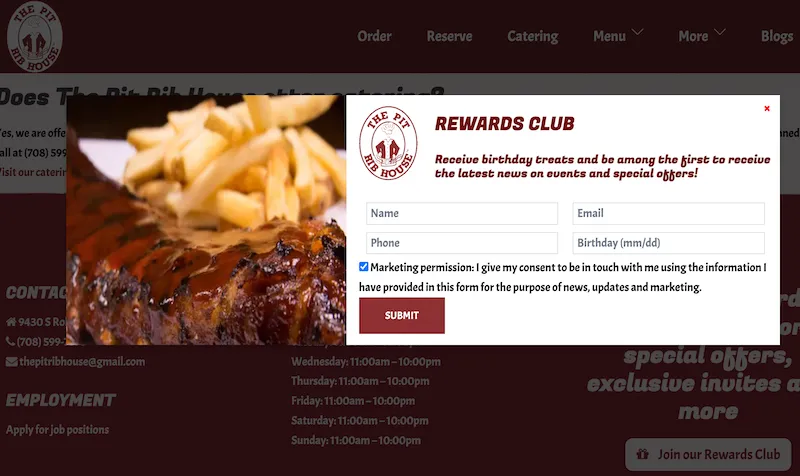
Not only does email marketing offer a low-cost method to attract local customers and increase revenue, but it also serves as a versatile tool for enhancing your restaurant’s brand identity and fostering customer loyalty.
With well-crafted email campaigns and newsletters, you can keep your audience informed about current promotions, special events, and new menu items. To maximize the impact of your email marketing efforts, consider the following strategies:
- Personalization: Segment your audience based on their preferences and behaviors. Tailor your messages to meet their specific needs and expectations. Personalized emails have higher open and click-through rates, leading to better engagement and conversions.
- Compelling Content: Create engaging and relevant content that resonates with your audience. Share behind-the-scenes stories, chef’s specials, customer testimonials, and upcoming events. High-quality visuals and clear calls-to-action can significantly enhance the appeal of your emails.
- Automation: Utilize email automation tools to send timely and relevant messages. Automated emails for birthdays, anniversaries, and special occasions can make your customers feel valued and appreciated, fostering a stronger connection with your brand.
- Exclusive Offers: Reward your email subscribers with exclusive discounts, early access to new menu items, and special promotions. This not only incentivizes sign-ups but also encourages repeat visits and customer loyalty.
- Mobile Optimization: Ensure that your emails are optimized for mobile devices. With a significant portion of users checking emails on their smartphones, a mobile-friendly design is crucial for a seamless user experience.
- Analytics and Testing: Regularly analyze the performance of your email campaigns. Track metrics such as open rates, click-through rates, and conversions. A/B testing different subject lines, content, and layouts can provide valuable insights into what resonates best with your audience.
Building a robust email marketing list is essential for nurturing leads, boosting sales, and increasing traffic. By focusing on personalization, compelling content, and continuous optimization, you can leverage email marketing to its full potential and set your restaurant apart from the competition.
14. Push Messaging
Restaurants need to leverage every tool at their disposal to stay connected with their customers. Push messaging has emerged as a powerful and immediate way to reach diners, driving engagement and boosting sales through timely, personalized communications.
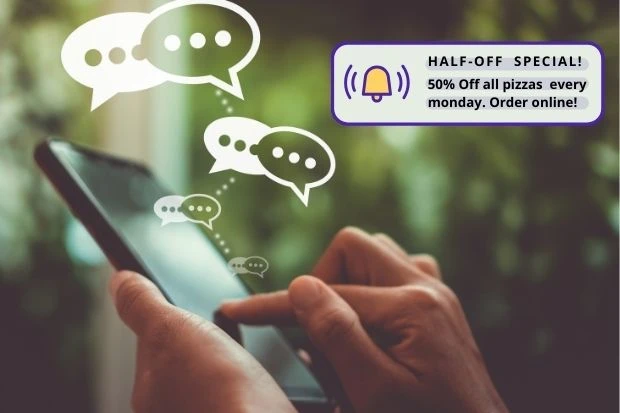
Push notifications are short messages sent directly to a user’s device from a mobile app or web browser, allowing restaurants to connect with customers anytime, anywhere.
This direct line of communication offers unique advantages for restaurant marketing:
Immediate Impact: Push messages can be delivered instantly, making them ideal for time-sensitive offers or last-minute promotions. For example, a restaurant could send a push notification about a happy hour special just as the workday is ending, encouraging immediate action.
Personalization: Advanced push messaging platforms allow for sophisticated segmentation and personalization. Restaurants can tailor messages based on customer preferences, past ordering history, or location. For instance, a regular customer who often orders vegetarian dishes could receive notifications about new plant-based menu items.
Increased Engagement: Well-crafted push messages can significantly boost customer engagement. They can remind users about abandoned cart items, promote loyalty program benefits, or simply share exciting news about the restaurant.
Driving Foot Traffic: Geofencing technology allows restaurants to send push notifications to customers when they’re in the vicinity, potentially driving foot traffic during slower periods.
Order Updates: For restaurants offering delivery or takeout, push notifications provide a convenient way to keep customers informed about their order status in real-time.
To maximize the effectiveness of push messaging, restaurants should follow these best practices:
- Obtain explicit permission from users to send push notifications.
- Keep messages concise and compelling, with a clear call-to-action.
- Use rich media like images or GIFs to make notifications more engaging.
- Time notifications strategically based on user behavior and preferences.
- Monitor key metrics like open rates and conversion rates to optimize your strategy.
- Avoid over-messaging, which can lead to notification fatigue and opt-outs.
By incorporating push messaging into their marketing strategy, restaurants can create a more dynamic and responsive relationship with their customers, driving engagement and sales in an increasingly mobile-first world
Any piece of information that is relevant content or breaking news can be delivered as a notification. Personalization and segmentation will help engage with your customers and provide the best return on investment. Content that is tailored to their interest and that is not spammy usually gets the best engagements rates.
15. Loyalty Rewards
Restaurant loyalty programs, when done correctly, can result in repeat sales. Many consumers care about accumulating points and receiving free meals. Many big food businesses, such as Starbucks, Panera Bread, and Arby’s, use this approach and have drawn millions of customers as a result of their loyalty programs.
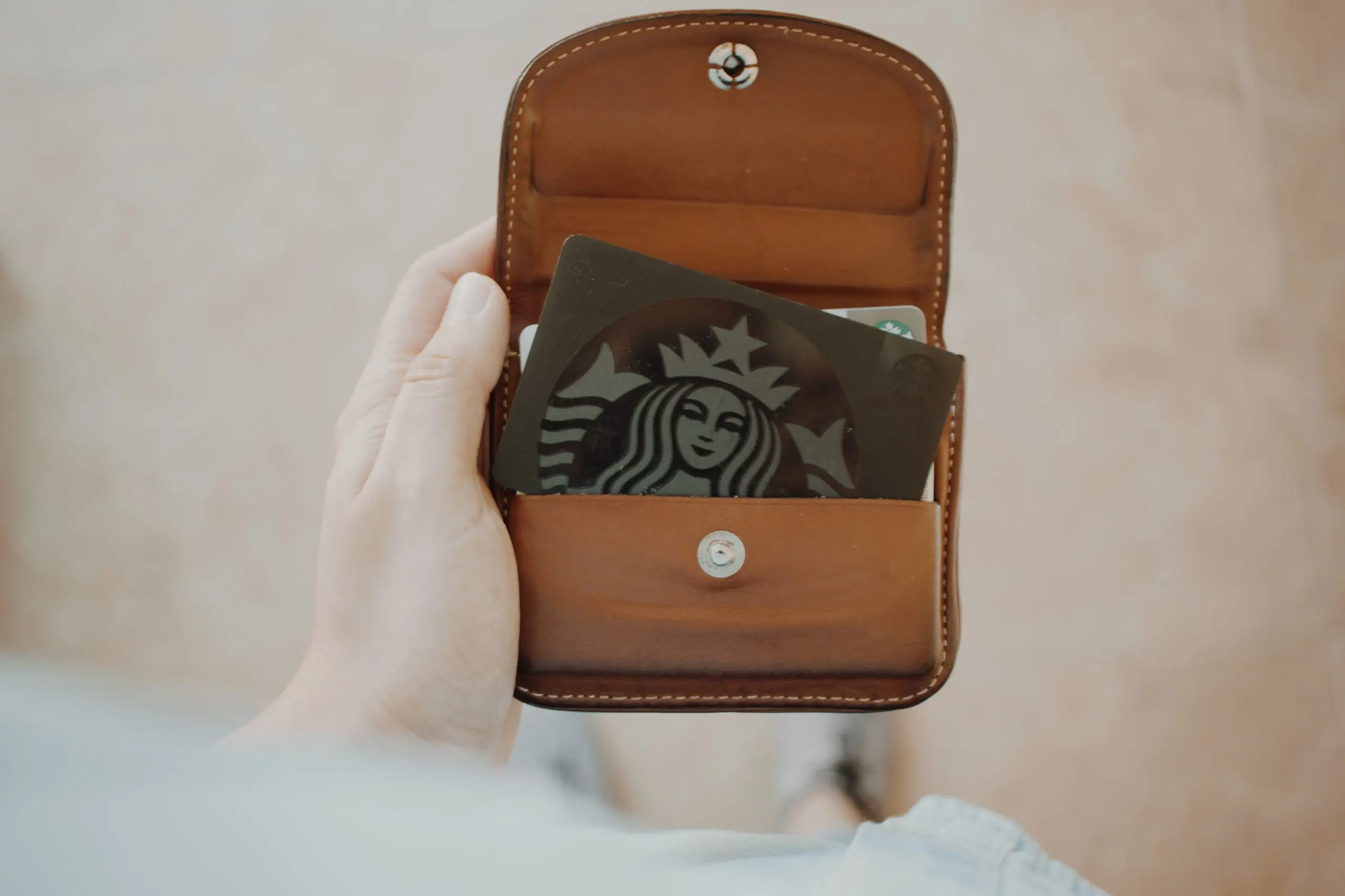
What factors contribute to the success of a loyalty program? There are a number of aspects to consider, including how easy it is to use, whether it has a digital option, whether it is inclusive, and whether it is advertised via all accessible platforms, such as Instagram or within your referral network.
Loyalty rewards programs might boost your marketing and sales efforts because they don’t focus solely on customers that have already been to your restaurants. If the incentives are personalized and effective, you can attract new clients.
16. Local Community Marketing

Local community marketing can be a game changer for your marketing efforts. Location-based marketing is more than local SEO. Optimizing your website, organic traffic and paid advertising can help raise awareness in localized regions. Besides adding hyper-local keywords, you can engage with locals on their preferred social media channels.
Targeting local communities and creating a space where your users can connect with you either on Twitter or Facebook or any other platform, allows you to prove that you provide excellent customer service or it can simply be a conversation starter.
If you are interested in getting testimonials, it is easier to get local reviews rather than reaching out to customers at a national level. Also, localized ads tend to have a higher ROI because they tend to “speak the local language”.
17. Local Sourcing
Incorporating local ingredients into your restaurant’s menu is not just a trend; it’s a powerful marketing strategy that resonates with today’s conscious consumers.
By sourcing locally, you support the community, ensure fresher produce, and enhance your restaurant’s reputation for quality and sustainability.

Using local ingredients offers multiple benefits that can significantly boost your restaurant’s appeal and customer loyalty. Here’s how you can leverage this strategy effectively:
- Community Support and Engagement:
- Build Relationships: Partner with local farmers, growers, and suppliers. This not only supports the local economy but also builds strong community ties.
- Storytelling: Share the stories of your local suppliers on your website and social media. Highlighting their practices and dedication to quality can create a deeper connection with your customers.
- Marketing and Branding:
- Menu Highlights: Clearly indicate which dishes feature local ingredients on your menu. Use terms like “farm-to-table” or “locally sourced” to attract health-conscious and eco-friendly diners.
- Seasonal Specials: Create seasonal menu items that showcase the freshest local produce. This keeps your menu dynamic and gives customers a reason to return to try new dishes.
- Quality and Freshness:
- Superior Taste: Local ingredients are often fresher and more flavorful because they don’t have to travel long distances. This can enhance the overall dining experience and lead to positive reviews and repeat business.
- Nutritional Value: Fresher ingredients tend to retain more nutrients, which can be a selling point for health-conscious customers.
- Sustainability and Environmental Impact:
- Reduced Carbon Footprint: By sourcing locally, you reduce the need for long-distance transportation, which lowers your restaurant’s carbon footprint.
- Waste Reduction: Local sourcing can lead to less packaging waste and spoilage, contributing to a more sustainable operation.
- Marketing Campaigns:
- Farm Tours and Events: Organize farm tours or events where customers can meet the local farmers who supply your ingredients. This can be a unique selling point and a memorable experience for your patrons.
- Social Media and PR: Use social media to showcase your commitment to local sourcing. Post behind-the-scenes content of your chefs visiting local farms or preparing dishes with fresh, local ingredients.
- Customer Education:
- Menu Descriptions: Educate your customers about the benefits of local ingredients through detailed menu descriptions. Explain how local sourcing impacts taste, quality, and the environment.
- Workshops and Tastings: Host workshops or tasting events that focus on local ingredients. This can attract food enthusiasts and create a buzz around your restaurant.
By emphasizing local ingredients, you not only enhance the dining experience but also position your restaurant as a leader in sustainability and community support. This strategy can differentiate your brand, attract a loyal customer base, and ultimately drive sales.
18. Plant-based Marketing
The plant-based food market has experienced explosive growth in recent years, with the global plant-based food market size projected to reach $77.8 billion by 2025.
This surge in popularity presents a significant opportunity for restaurants to attract new customers and differentiate themselves in a competitive market.
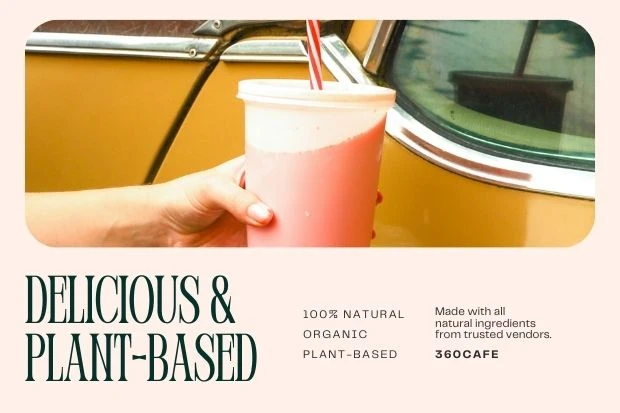
To capitalize on this trend:
- Diversify your menu: Offer a range of plant-based options beyond just salads. Include innovative dishes that showcase plant-based proteins, dairy alternatives, and creative vegetable preparations.
- Highlight sustainability: Emphasize the environmental benefits of plant-based options on your menu and marketing materials. Many consumers are motivated by sustainability concerns when choosing plant-based foods.
- Collaborate with plant-based brands: Partner with popular plant-based food companies to create co-branded menu items or promotions.
- Train staff: Ensure your team is knowledgeable about plant-based options and can confidently recommend and describe these dishes to customers.
- Host special events: Organize plant-based tasting menus or themed nights to attract curious diners and showcase your culinary creativity.
- Leverage social media: Share visually appealing images and videos of your plant-based dishes to appeal to health-conscious and environmentally aware consumers.
By embracing plant-based options, restaurants can appeal to a growing segment of consumers, including flexitarians, vegetarians, and vegans, while also positioning themselves as forward-thinking and environmentally conscious establishments.
19. Delivery Service Partnership
Partnering with third-party delivery services has become an essential strategy for restaurants looking to expand their reach and boost sales. These partnerships can significantly increase your restaurant’s visibility and accessibility, tapping into a growing market of consumers who prefer the convenience of ordering food from home or office.
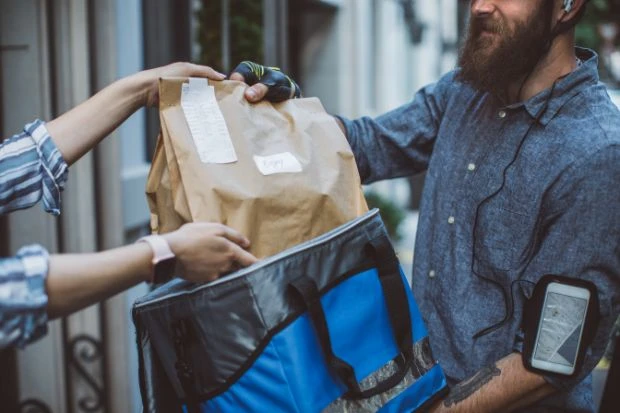
Here’s how to make the most of delivery service partnerships:
- Choose wisely: Research and select delivery partners that align with your restaurant’s brand and target audience. Consider factors such as commission rates, delivery radius, and customer base.
- Optimize your delivery menu: Create a streamlined menu specifically for delivery orders, focusing on dishes that travel well and maintain quality during transit. This may involve adapting existing recipes or developing new ones suited for delivery.
- Ensure quality packaging: Invest in high-quality, eco-friendly packaging that keeps food fresh and presentable upon arrival. This not only enhances the customer experience but also reinforces your brand image.
- Integrate systems: Implement technology that seamlessly integrates delivery orders with your existing point-of-sale system to streamline operations and reduce errors.
- Train staff: Provide specialized training for staff handling delivery orders to ensure efficiency and maintain food quality standards.
- Leverage data: Utilize the data provided by delivery partners to gain insights into customer preferences, popular items, and peak ordering times. Use this information to refine your menu and marketing strategies.
- Cross-promote: Collaborate with delivery services on promotional campaigns to increase visibility and attract new customers. This could include special offers, featured placements, or joint marketing initiatives.
- Maintain brand consistency: Ensure that your brand identity is consistently represented across all delivery platforms, including high-quality food photos, accurate menu descriptions, and brand messaging.
- Encourage direct ordering: While leveraging third-party services, also develop and promote your own direct ordering system to build customer loyalty and reduce commission costs.
- Monitor and adapt: Regularly review the performance of your delivery partnerships, gathering customer feedback and analyzing sales data to continuously improve your delivery offerings and strategy.
By strategically approaching partnerships with delivery services, restaurants can expand their customer base, increase revenue streams, and adapt to changing consumer preferences in the digital age.
PRO TIP
Carefully evaluate commission rates, profit margins and digital impact before signing agreement.
When it comes to partnering with delivery services, the choice you make can significantly impact your restaurant’s success, from profit margins, brand reputation, seo and digital footprint impact.
20. Content Marketing – Start A Food Blog
Content marketing has become an essential strategy for restaurants to attract and engage customers in the digital age. One of the most effective ways to implement this is by starting a food blog.
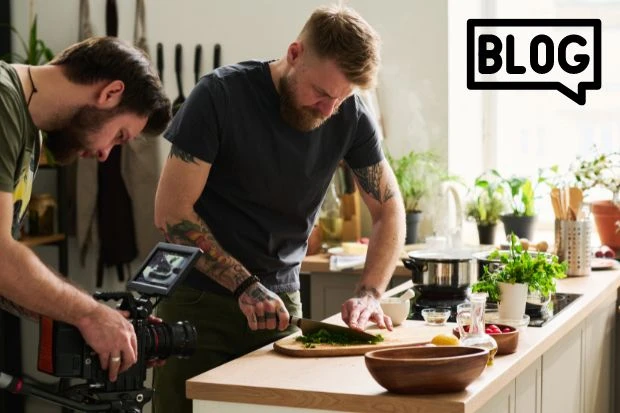
Here’s why it’s crucial and how to do it effectively:
Why Start a Food Blog? A food blog can serve multiple purposes for your restaurant:
- Improve SEO rankings by regularly publishing fresh, relevant content
- Showcase your culinary expertise and unique offerings
- Build a community around your brand
- Provide valuable information to potential customers
- Create shareable content for social media platforms
How to Create an Effective Restaurant Blog?
- Choose a Focus: Decide on a specific angle for your blog. This could be recipes using your signature ingredients, behind-the-scenes looks at your kitchen, or local food culture insights.
- Develop a Content Calendar: Plan your posts in advance, aligning them with seasons, holidays, and special events at your restaurant.
- Use High-Quality Visuals: Invest in professional food photography or learn to take appetizing photos yourself. Visual content is crucial in the food industry.
- Share Recipes: Offer simplified versions of your dishes for home cooks. This builds trust and keeps your restaurant top-of-mind.
- Highlight Your Team: Feature profiles of your chefs, servers, and other staff members to humanize your brand.
- Incorporate Video Content: Create cooking tutorials, ingredient spotlights, or virtual kitchen tours to engage viewers.
- Optimize for SEO: Use relevant keywords, meta descriptions, and alt tags to improve your blog’s search engine visibility.
- Promote Local Partnerships: Write about local farmers, suppliers, or food events to strengthen community ties.
- Encourage Interaction: Enable comments and respond promptly to build a dialogue with your readers.
- Cross-Promote: Share your blog posts across your social media channels and in email newsletters to maximize reach.
By consistently producing valuable, engaging content through your food blog, you can significantly enhance your restaurant’s online presence, attract new customers, and foster loyalty among existing patrons.
This long-term strategy can complement your other marketing efforts and help establish your restaurant as a thought leader in the local food scene.
Summary of Restaurant Marketing Ideas
There are numerous restaurant marketing ideas that can boost your sales and attract new customers. After refining your core values and building your customer profile, it’s essential to explore which marketing efforts are most effective for both the short and long term.
Clearly define your goals and expected outcomes before implementing any marketing strategy. Optimizing and reporting on each marketing effort is crucial for understanding what works and what doesn’t for your restaurant.
The vast majority of digital marketing efforts were dedicated to organic social media (per HubSpot’s State of Marketing Report). However, an in-depth ROI analysis across various marketing channels (see chart below) shows that organic social media delivered the lowest results in terms of revenue impact. This is despite the substantial time and resources invested in creating and maintaining a robust social media presence.
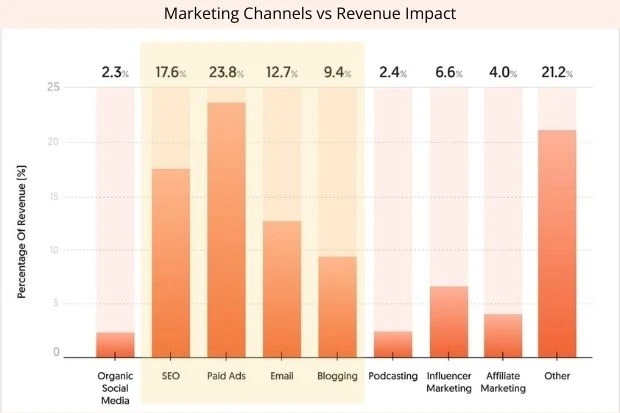
The top 4 digital marketing channels for restaurants, ranked by effectiveness and impact:
This analysis underscores the necessity to re-evaluate marketing strategies and allocate resources more efficiently. By redirecting efforts towards higher-performing channels, you can maximize ROI and achieve superior overall marketing results.
If you need help implementing some of the best marketing ideas or figuring out your next step, we are here to assist you! Whether you are just starting your marketing journey or looking for advanced consultancy services, we can provide the support you need.
Next Steps:
- Sign up for our newsletter to receive the latest trends and tips in restaurant marketing.
- Book a free 30-minute consultation with one of our marketing experts to create a customized marketing strategy for your business.
Don’t let your competitors take a bigger slice of the market. Take action today and watch your restaurant’s success grow!
FAQs
What is the best marketing strategy for restaurants?
There is no single best marketing strategy for restaurants. The ideal approach for a specific restaurant brand depends on its concept, business goals, and current digital presence. Developing the best strategy requires a thorough digital audit and analysis to create the right plan and marketing mix tailored to the restaurant’s unique needs.
Learn more about restaurant marketing mix »
How do I market my small restaurant?
The real challenge is how to market your small restaurant effectively with a limited budget while growing your online presence, increasing customer engagement, and driving online sales. The good news is that digital marketing is both cost-effective and efficient compared to traditional, expensive marketing methods. By taking a focused approach, you can achieve these goals within your budget.
Learn more about small restaurant marketing ideas
How to attract customers in a restaurant?
To attract customers to your restaurant, consider implementing a variety of marketing strategies that enhance visibility, engage potential diners, and foster a welcoming atmosphere.
How do I market my restaurant locally?
To market your restaurant locally, focus on enhancing your online presence through local SEO to ensure your restaurant appears in local search results, claim and optimize your Google Business Profile, and engage with customers on social media by posting regularly and responding to reviews. Additionally, implement targeted email marketing campaigns, collaborate with local influencers, and participate in community events to build relationships with local customers. Offering promotions or discounts, partnering with local businesses, and maintaining an updated, user-friendly website with clear contact information and menu details can further boost your local visibility and attract more customers.
Read more about Hyper-Local Marketing Ideas for Restaurants
What is an effective restaurant marketing plan?
Before deciding to go social and reach out to the top food bloggers from your area, restaurant owners and marketeers should put together a marketing plan. All the marketing efforts need a systematic approach that will allow them to be validated based on their performance. An effective restaurant marketing plan starts with a clear objective and a goal. The next part would be to set up a marketing budget. How much are you willing to spend on Facebook ads? The next step to define your customers and understand their needs. All of these steps define a good restaurant marketing plan.
Learn more about 52-Week Marketing Playbook on NGAZE
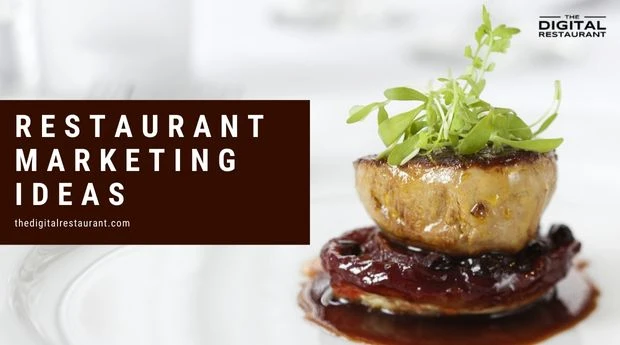
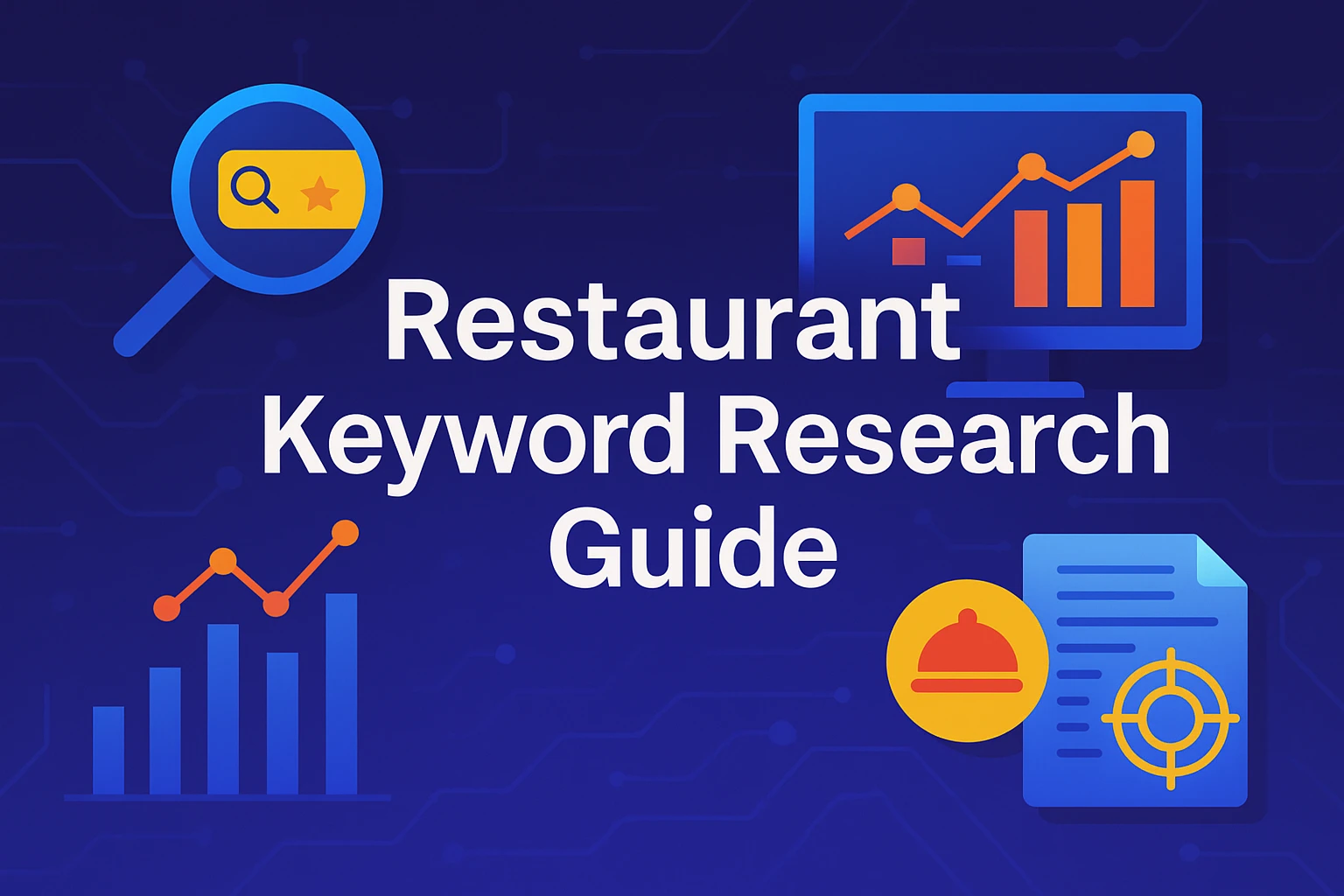
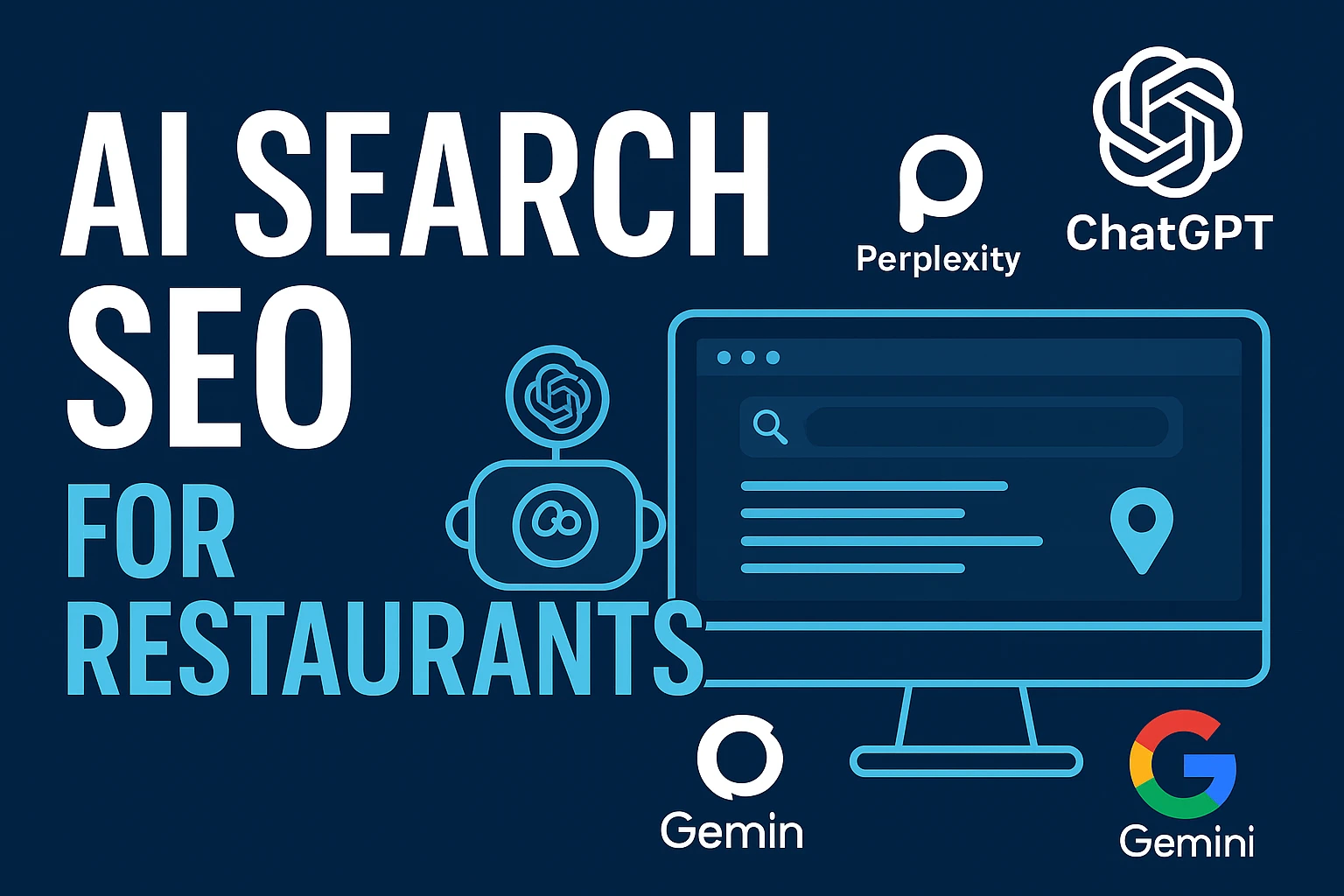
![Restaurant Holiday Marketing Ideas [2025 Update]](https://thedigitalrestaurant.com/wp-content/uploads/2015/10/holiday-marketing-ideas-e1494363402365.png)
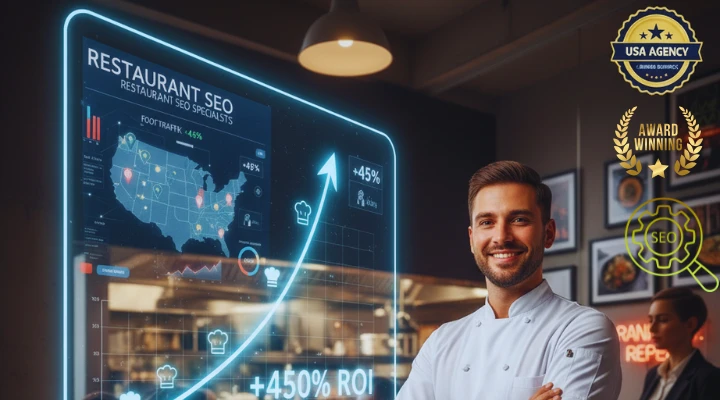
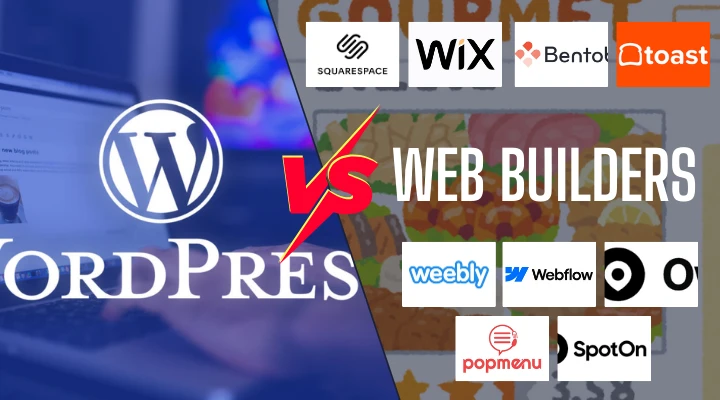

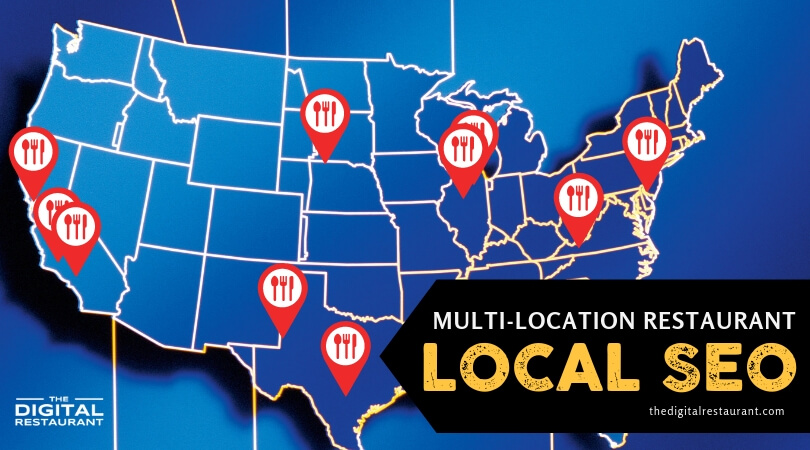
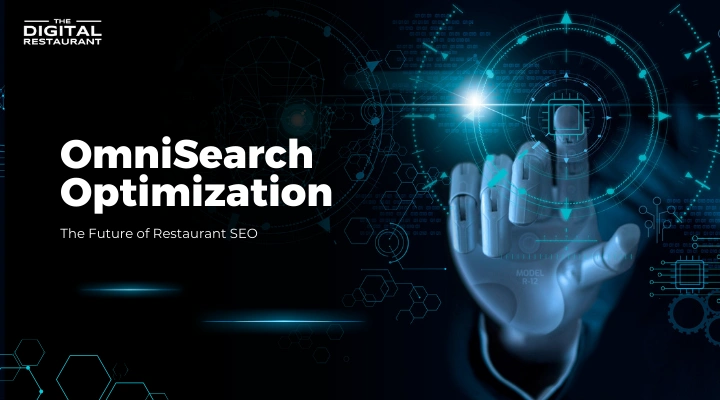
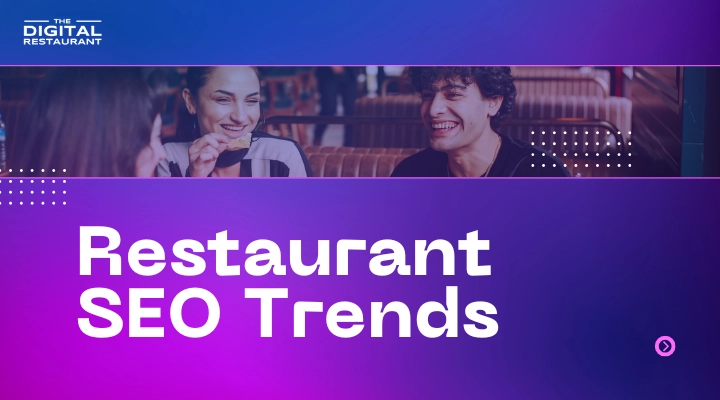
Leave a Reply